I am thinking of a filthy, disgusting creature that wasn’t invited into your home and just won’t go away. No, this is not a lawyer joke nor am I thinking about your uncle. Because of the types of places I have gone, particularly third world destinations, war torn countries and disaster sites, I have come to expect cockroaches to be one of my traveling companions or at least my welcoming party. But at least let me begin with some good news. There are no cockroaches in Antarctica. If I come up with anything else I will let you know.
Since this web site focuses on travel and food I try to deal with topics that include both. “La cucaracha” is found just about everywhere and there are people who actually like to eat them. But I am getting ahead of myself. Wait, are you actually singing that song? Did you know the Spanish folk song, “La Cucaracha,” is about a cockroach unable to walk because he has lost one of his six legs?

Let me tell you what this chapter is not about. It is not about all the strange things people eat. There are so many they can’t possibly be listed. It is also not about the grossest things people eat. Some things eaten around the world are really not worth mentioning and can be very disgusting, even depraved, so I won’t be mentioning them even though I have seen some of them.
Some people have eaten unusual items to win a wager like the man who ate his automobile by grinding it up and putting it in his mash potatoes. Isn’t there an easier way to make money than proving you can eat your car? And the list is actually long for that type of culinary challenge. One man ate a coffin, another a Cessna airplane, one consumed thousands of light bulbs and one person ate his bedroom (yes, even the doorknobs and blinds, drywall and carpet). Next time he tells his mom he is hungry she will listen.
But this is the first of several stories about odd and often funny moments in our personal travels that have to do with food. No doubt many of you have stories to tell since you are travelers and food in one culture is not always what is thought of as food in another.
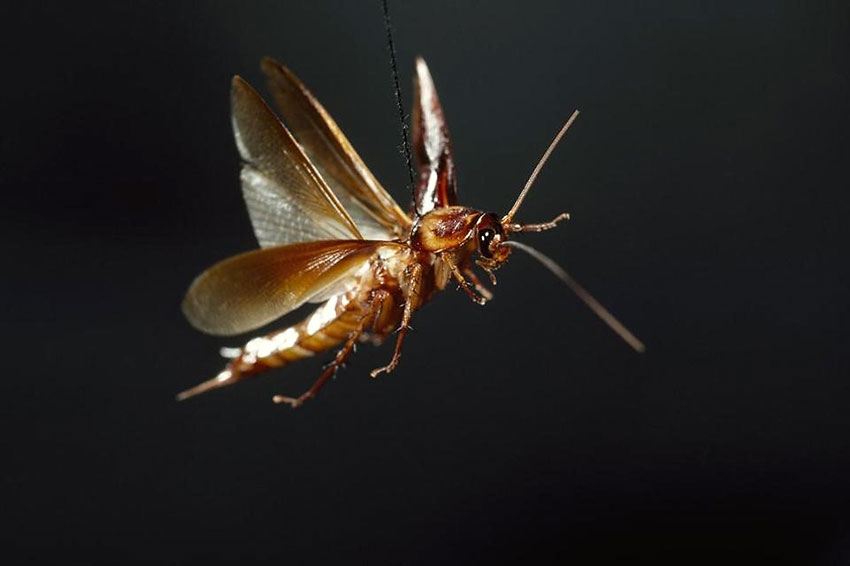
The Merriam Webster dictionary defines food in a lengthy and technical fashion including words like “carbohydrate, and fat used in the body of an organism to sustain growth, repair, and vital processes.” I won’t bore you with the rest. But in my 70 plus years of life and travel I have come to a simpler definition. Food = anything. At this time I cannot think of much that man has not eaten on this planet. If possible, someone would even try to eat that.
When I grew up it never entered my mind that one day TV programs would exist that were built around people eating tarantulas, rats, scorpions and hissing cockroaches. Things are definitely less shocking today. I was thinking about what is the most important thing to carry with you when traveling in the impoverished regions of the world. The answer is a sense of humor. I was once laying on a wooden board on the ground tying to fall asleep in a remote region of the Philippines with insects crawling on me. So, what was funny about that? My friend was sleeping in a wheelbarrow. Now, that I think about it, I may have been jealous.
There are 4,000 species of cockroaches in the world. They are one of the few things that survived the Hiroshima atomic bomb. Here are some random, interesting facts about this uninvited house guest:
A cockroach can live for a week without its head. So, if you manage to accomplish that be sure to pull one of its legs off as well. At least it will only run in circles. It can even survive being submerged under water for half an hour. Roaches can run up to three miles in an hour, even a one-day old baby the size of a dust speck. They are born on the run and spend their lives that way. The American cockroach has shown a marked attraction to alcoholic beverages, especially beer. This is sounding more like that uncle all the time. The world’s largest roach (which lives in South America) is six inches long with a one-foot wingspan. I don’t know about you but the most troubling word in that description is the word, “wingspan.” Yes, some cockroaches fly and can fly about the length of a tennis court.
They make a loud whirring noise just before they land on your neck. From personal experience I can describe that sound in more detail if you like. They can also live without food for a month but only a week without water so you usually find them around wet areas. Prisoners in WW2 ate them to get some protein. While living in Asia, we kept all food items in the refrigerator, nothing on our shelves, or roaches would get into them.
The World Health Organization (WHO) adds some additional encouraging news. They report that cockroaches are carriers of salmonella, typhoid, dysentery, cholera and many more diseases and that they will eat book bindings, glossy paper, shoe linings, hair, and even the nails of sleeping babies and sick people. Having said that it would be hard to imagine anyone eating them wouldn’t it?
We had a cat in the Philippines that used to eat cockroaches where we lived. So, for all you cat haters, they do have a purpose. But there was one drawback. In the middle of the night when I was in the deepest sleep I would be awakened by this gentle purring sound in my face and the smell of horrible cockroach breath. I guess our cat was so happy eating the disease-ridden varmints all day that she just wanted to share her joy with us. I have never smelled a cockroach in America, but in Asia we had that strong, unmistakable odor in our cabinets, rooms and just about everywhere. And on our cat.
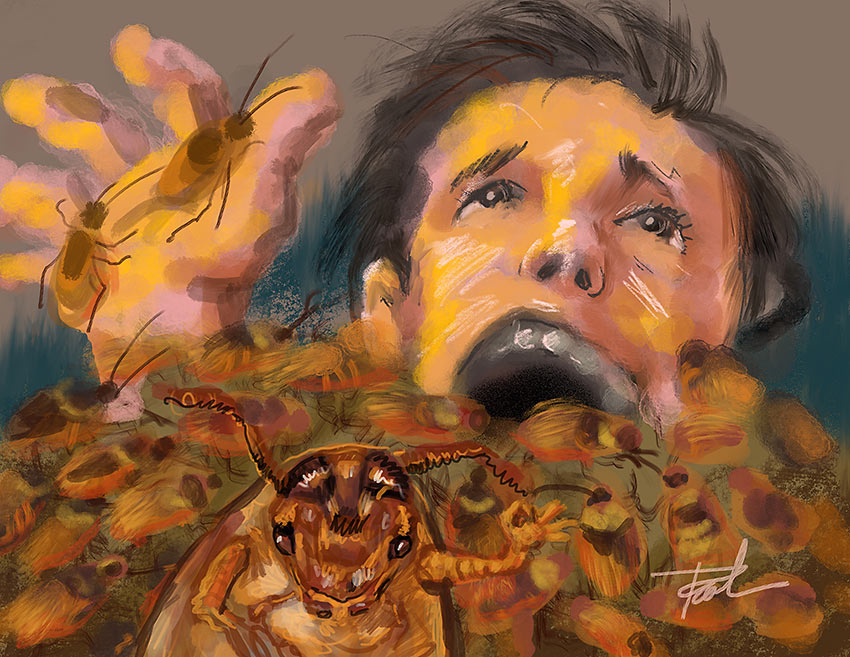
A friend of mine, was drinking milk in a restaurant one day and said he thought the milk was staring to turn, but he finished it anyway and at the bottom of the glass was a giant cockroach. When he told me what had happened, I forgot to ask if the roach was still alive.
There is a woman in China that has 100,000 cockroaches in her home and she breeds them and calls them her children. The one thing I can’t figure out with that story is how does she keep the number to only 100,000?
Asian cockroaches are much larger than the ones you see in America. We used to have a cockroach of the week contest for our five children to at least make a fun time of sharing our space with the critters. One night one of our young children woke up crying and said a cockroach bit her. We had not been in the country very long and we told her not to worry because they don’t bite. The next morning, she had a large red swollen area on her leg with a white spot in the middle. We asked a missionary friend if cockroaches bite and she said, “Oh, yes, and they make a swollen lump with a white spot in the middle.” We quickly apologized to our children and it was mosquito nets all around after that. I bet you didn’t know they bite, or fly.
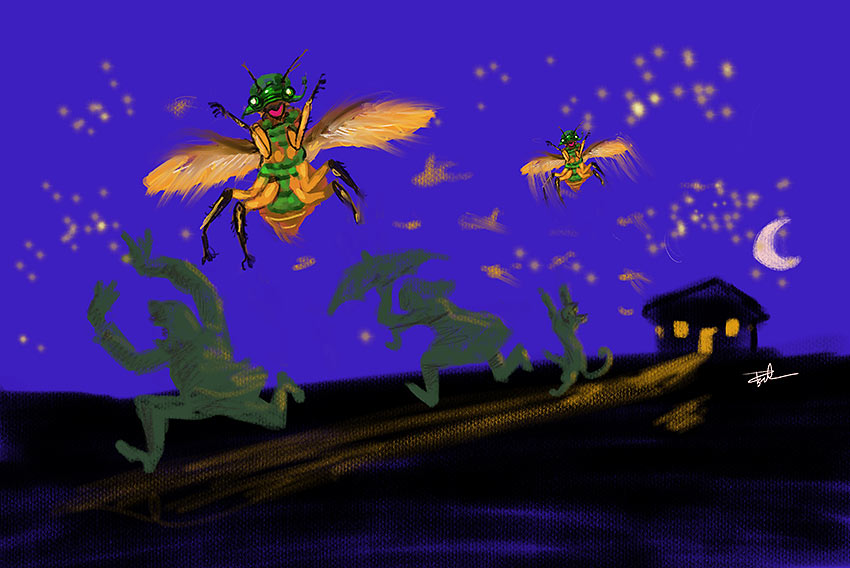
When the kids got older we stopped using the nets, just too much trouble. Cockroaches would get in our hair at night and many times one would crawl across my face and startle me awake at night. After several years we learned to just pick them out of our hair at night, crunch them in our hands and toss them on the floor and go back to sleep. As missionaries we worked with the poor and we lived near the poorer clusters of the people, so we had to deal with these dirty little buggers. But when we saw what cockroaches fed on and how they lived the one thing we never considered was eating them. I mean how would you prepare them? Would you boil them and make soup stock? I bet that would smell just delightful.
“A research team based at the Institute for Stem Cell Biology and Regenerative Medicine in India believes that the “milk” from the Pacific beetle cockroach – the protein-rich crystals that the insects lactate to feed their young – could make for the next great superfood. Now, maybe you’ll think twice before squashing that pesky cockroach in your apartment.” (CBS News)
No, let’s be clear, I will not think twice before squashing the pests and the only way I will milk one is with the bottom of my shoe. That brings me to the story I want to tell. You needed some background information to appreciate it.
One day, a friend who had just returned from Cambodia brought me something as a gift. It was a menu from a restaurant where he had eaten. On the menu, one of the main entrees, was “flying cockroaches.” So, this restaurant must have gotten bored with their contest of the week and starting eating them and it became so requested it earned a place on the menu.
A week later after getting that menu my wife and visited our youngest daughter who had used her school break to work at a Vietnamese refugee camp. The camp was about 4 hours north of the city of Manila where we lived. It housed about 18,000 Amerasians. These were the “leftovers” from the Vietnam war. American servicemen had fathered children and returned to the USA after their assignments leaving children with no fathers but more importantly, no country. They became a rejected people in Vietnam, viewed as a mixed-breed. Remember, we lost that war and left the country. As one writer has written “Many ‘children of the dust’ fathered by Americans were abandoned, taunted, abused, and left unschooled after the last of the U.S. military departed after the fall of Saigon.” The presence in the Philippines of several large American military bases also produced and abandoned over 50,000 Amerasian children when the bases pulled out.
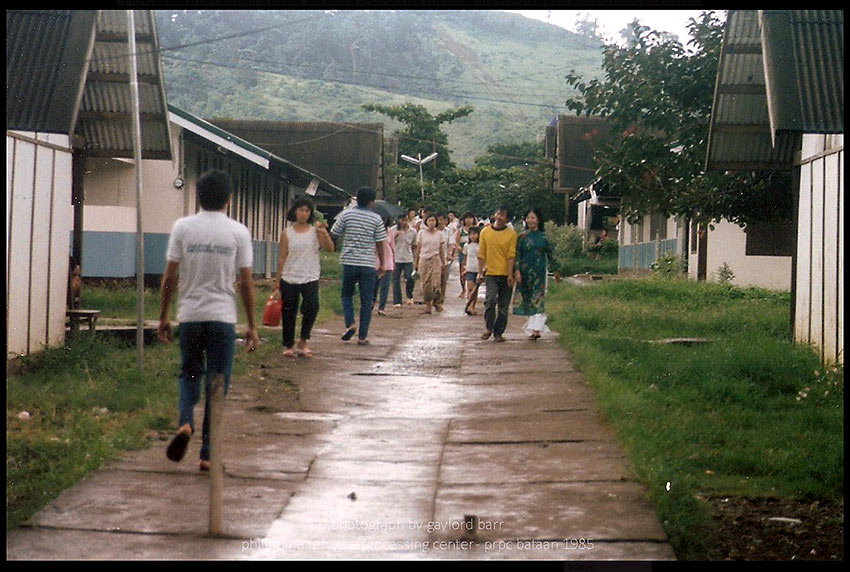
A US government congressional act would later allow 23,000 Amerasians and 65,000 family members to settle in the U.S.
It was an Amerasian resettlement camp where our youngest high school daughter worked that summer. So, what does that have to do with cockroaches? I’m coming to that. We arrived at the camp for our allowed visit. They were careful not to make the Amerasians a tourist site or photo op. It was a difficult place to visit. While there, we met the people our daughter stayed with and the people she worked with. One of those was a Vietnamese cook who prepared food for an American family that helped direct the camp operations.
At one point I was alone with the Vietnamese cook and my curiosity had gotten the better of me and I just had to ask. The memories of that menu with flying cockroaches was still fresh in my mind. I told him about the menu and I asked if he liked to eat cockroaches. He did and so I asked how he liked to prepare them. He described carefully slicing them up and frying them in brown sugar. I then asked if he liked them any other way. He revealed he like to eat them alive and when I asked him to expand that answer he described in detail how he picked off the wings and then tossed them in his mouth like you and I would eat peanuts. He seemed disappointed the American family didn’t share the same interest in what he liked to eat.
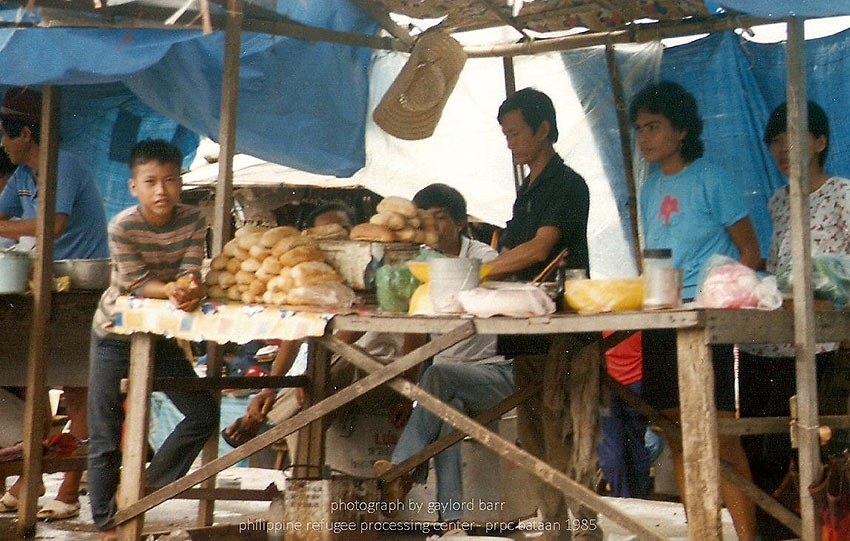
I had one more question for him. “Is there anything the American family eats that when you watch them eat it, it almost makes you sick to your stomach. At that point he looked around to make sure no one was watching and said in a quieter voice, “Yes, there is one thing. You know those potatoes that they mash up?” All I could say at that point was, “Yes, I know the exact thing you are talking about.” He eats live cockroaches and mashed potatoes makes him want to puke! The guy reminded me of Olle. He was a missionary from the Faroe Islands who, like us was working in the Philippines. We were at his house one day when he kindly offered us some of his personal stock of whale blubber. The Faroes are somewhere near Iceland and they mostly eat stuff that comes from the sea. I could have said fish but whale blubber is not fish, it is stuff, and ugly looking stuff at that. Olle actually brought that stuff in his check ins when he traveled back and forth to the Philippines. I don’t know why Customs didn’t shoot him when they inspected his bags. When we refused to eat his private whale blubber stock he tried to entice us by saying it was three years old, really seasoned. That explained the thick green ick growing on the yuck. I finally said, “Olle, how do you eat that stuff?” He said, “Well, you eat peanut butter!” I guess he saw the strange look on our faces so he continued, “And you know what it looks like?” I think Olle would have gotten along well with the Vietnamese cook as long as they didn’t mix peanut butter in with mashed potatoes.
I am reminded of one college frat person trying to be “macho” who ate a cockroach on a dare and then shortly afterwards his thoughts began to torment him and he quickly grabbed a plastic trash can in his room and emptied the contents of his stomach into it. He said afterwards, “I didn’t think I had lost it too bad, then as I looked in the can I noticed that one of my socks was at the bottom!”
I did say I would give you 101 things you can do with cockroaches so here they are:
- Eat them.
- Milk them.
- Squash them.
Repeat number three 98 more times
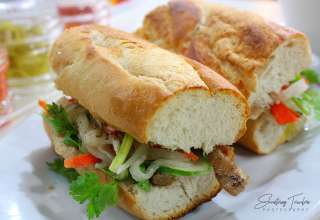



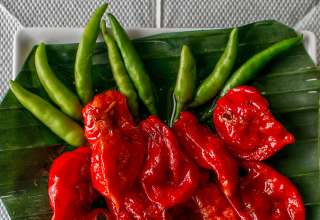
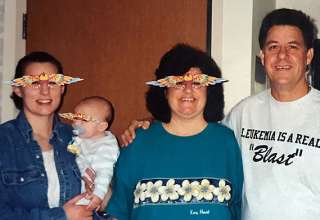



















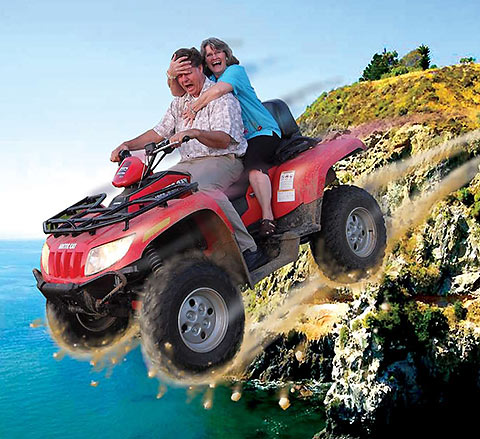


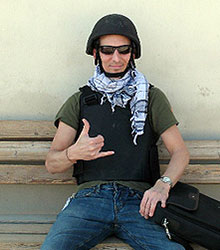 Jim Friend currently lives along the porous, barbarian no-man's land amidst the semi-primitive ethnic Oregonian and warring indigenous Californian tribes within the exanimate borders of the State of Jefferson. When not otherwise engaged in negotiations with the skirmishing amirs and maharani of the Federally Administered Tribal Areas, he has managed to travel to 49 US states, six Canadian provinces, and has scampered back and forth over the cartel-infested Mexican border on numerous occasions.
Jim Friend currently lives along the porous, barbarian no-man's land amidst the semi-primitive ethnic Oregonian and warring indigenous Californian tribes within the exanimate borders of the State of Jefferson. When not otherwise engaged in negotiations with the skirmishing amirs and maharani of the Federally Administered Tribal Areas, he has managed to travel to 49 US states, six Canadian provinces, and has scampered back and forth over the cartel-infested Mexican border on numerous occasions.


